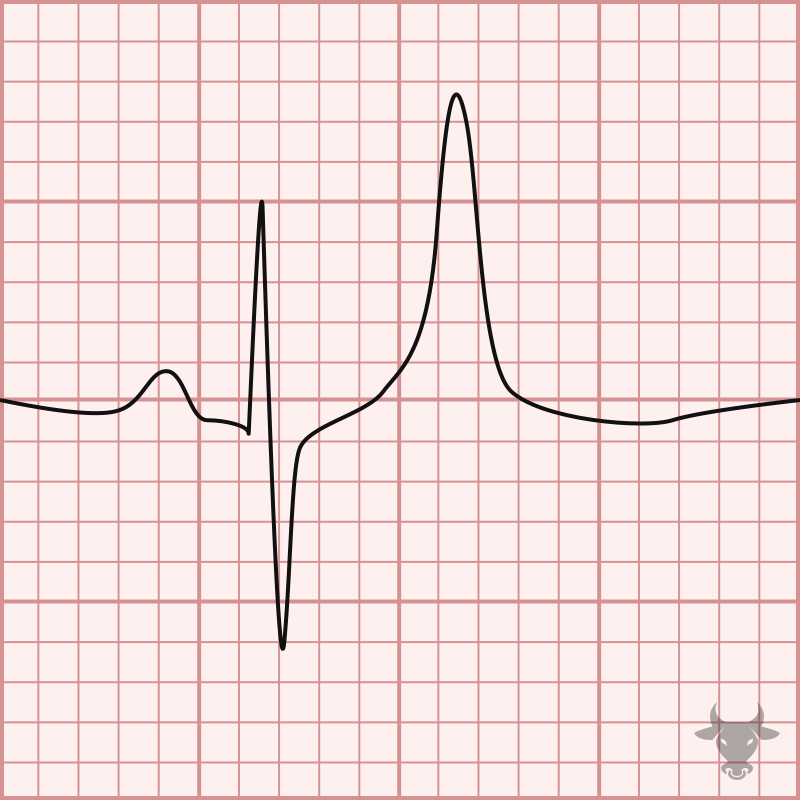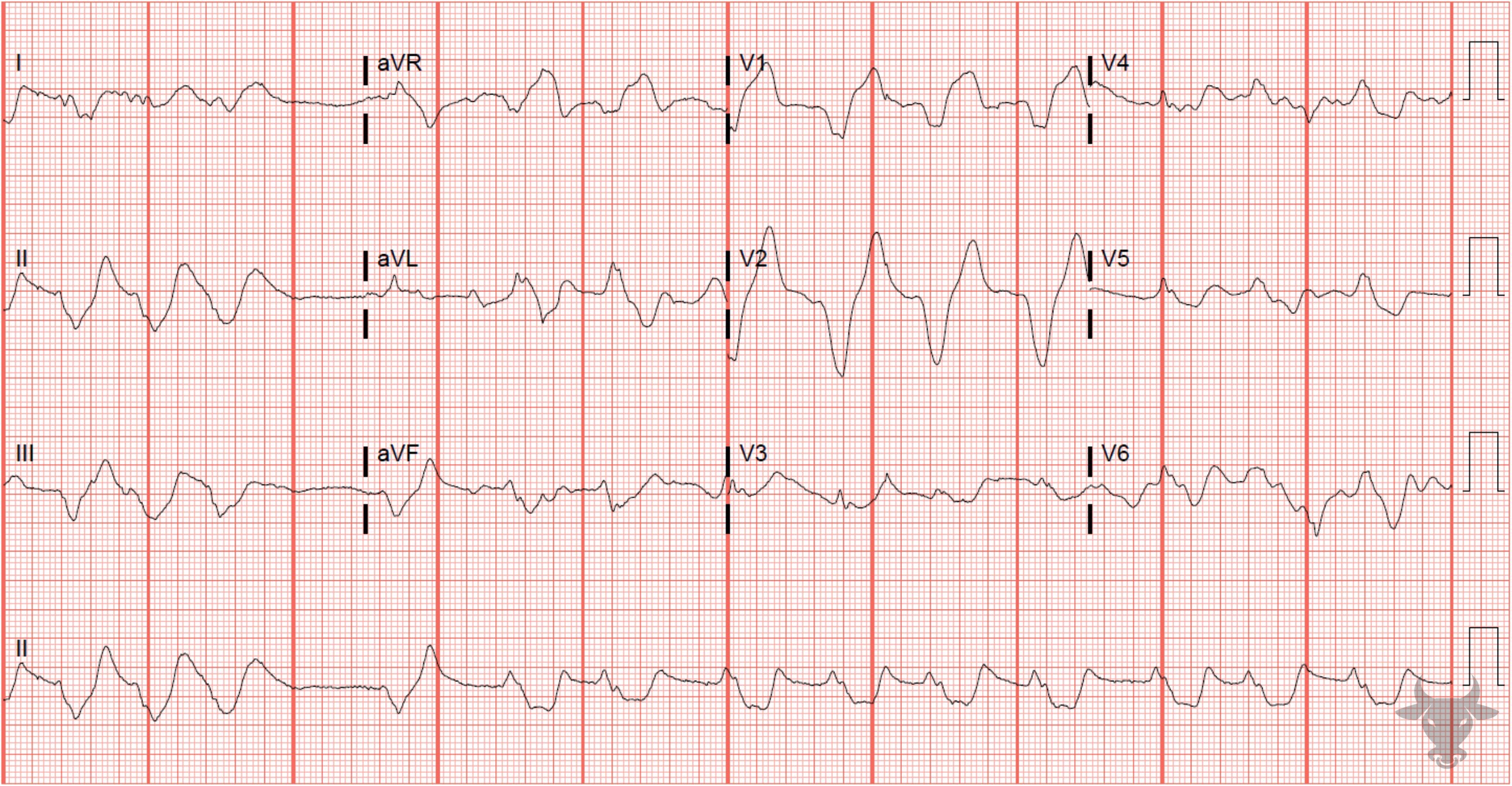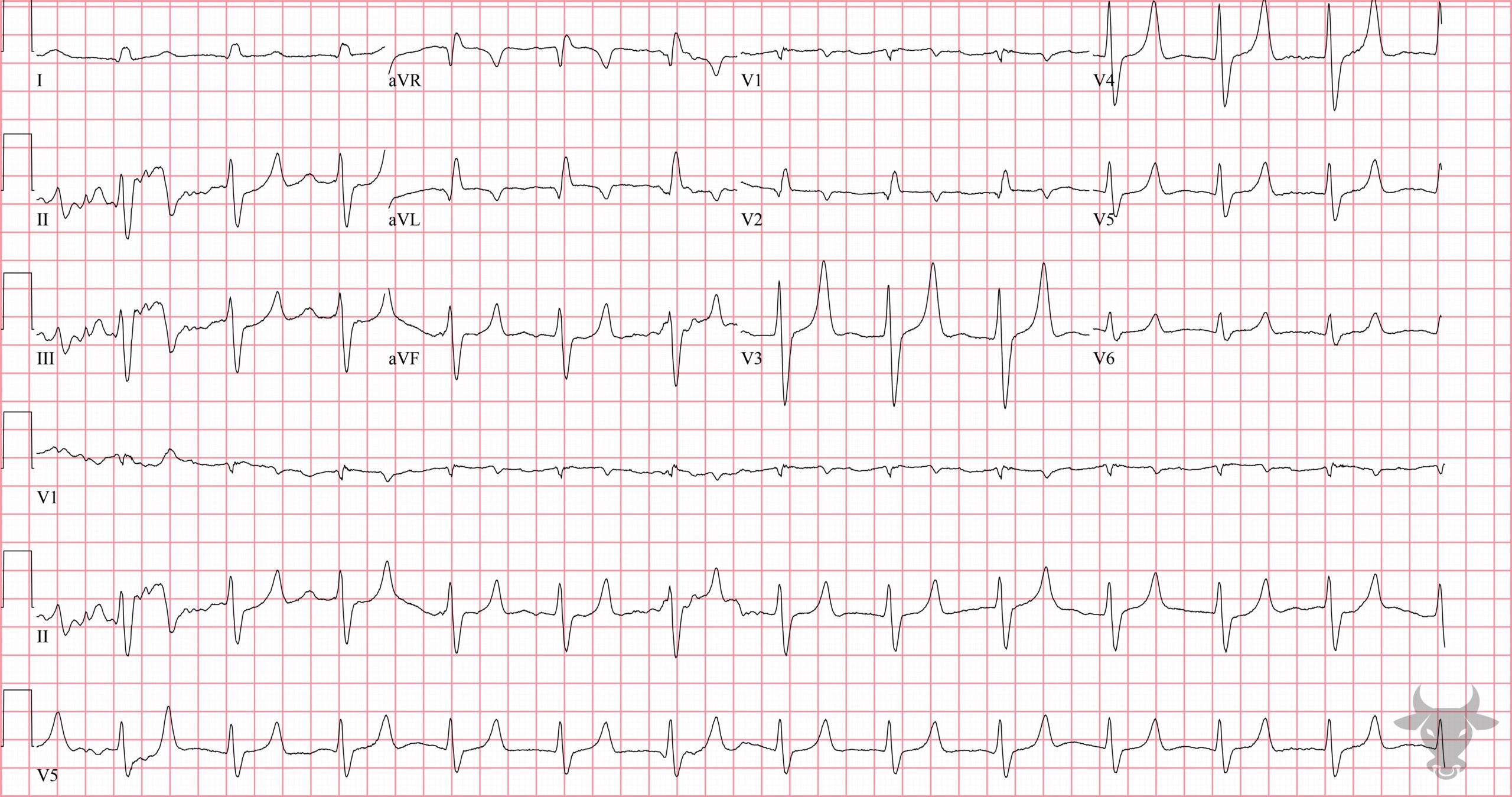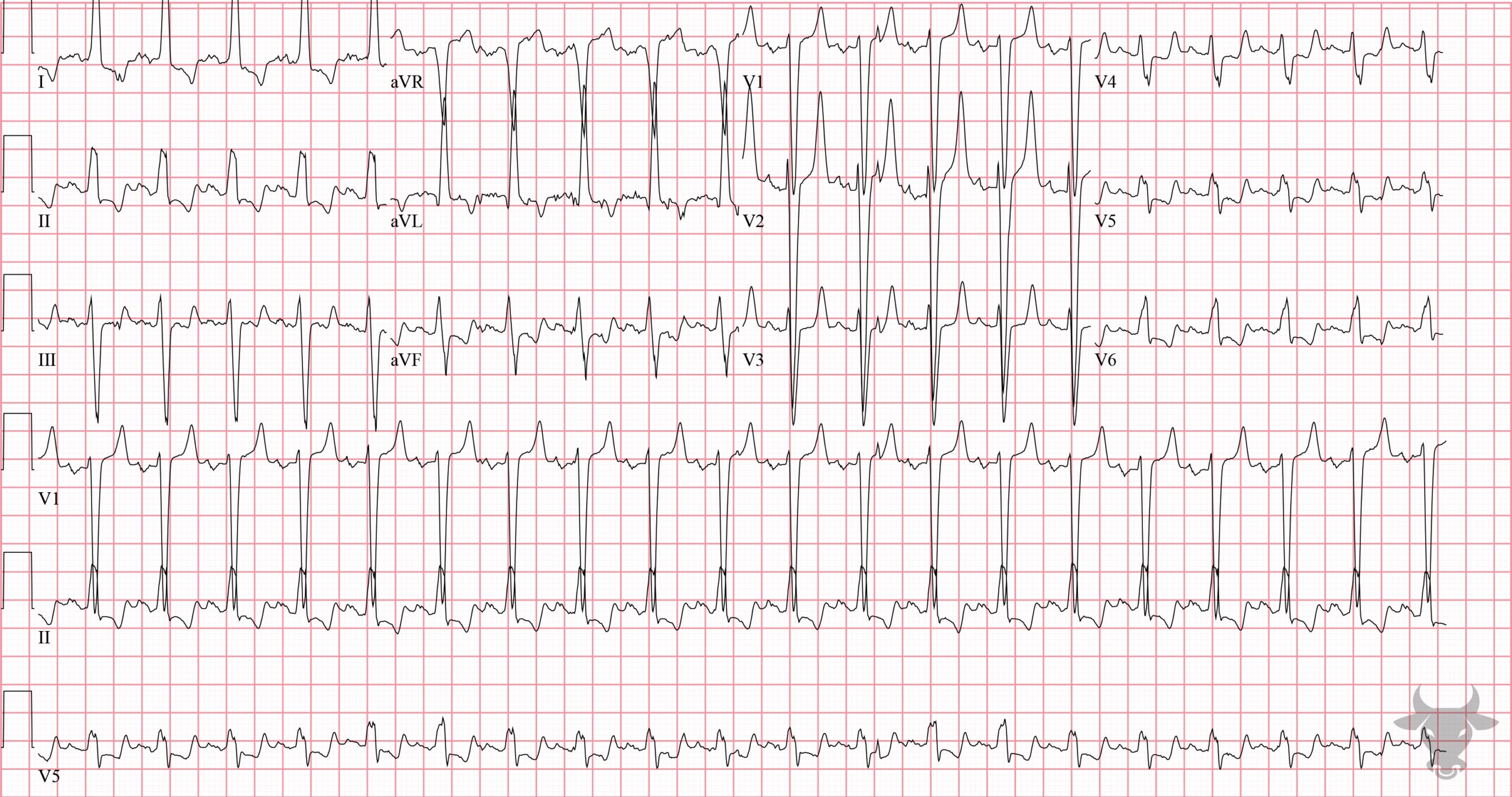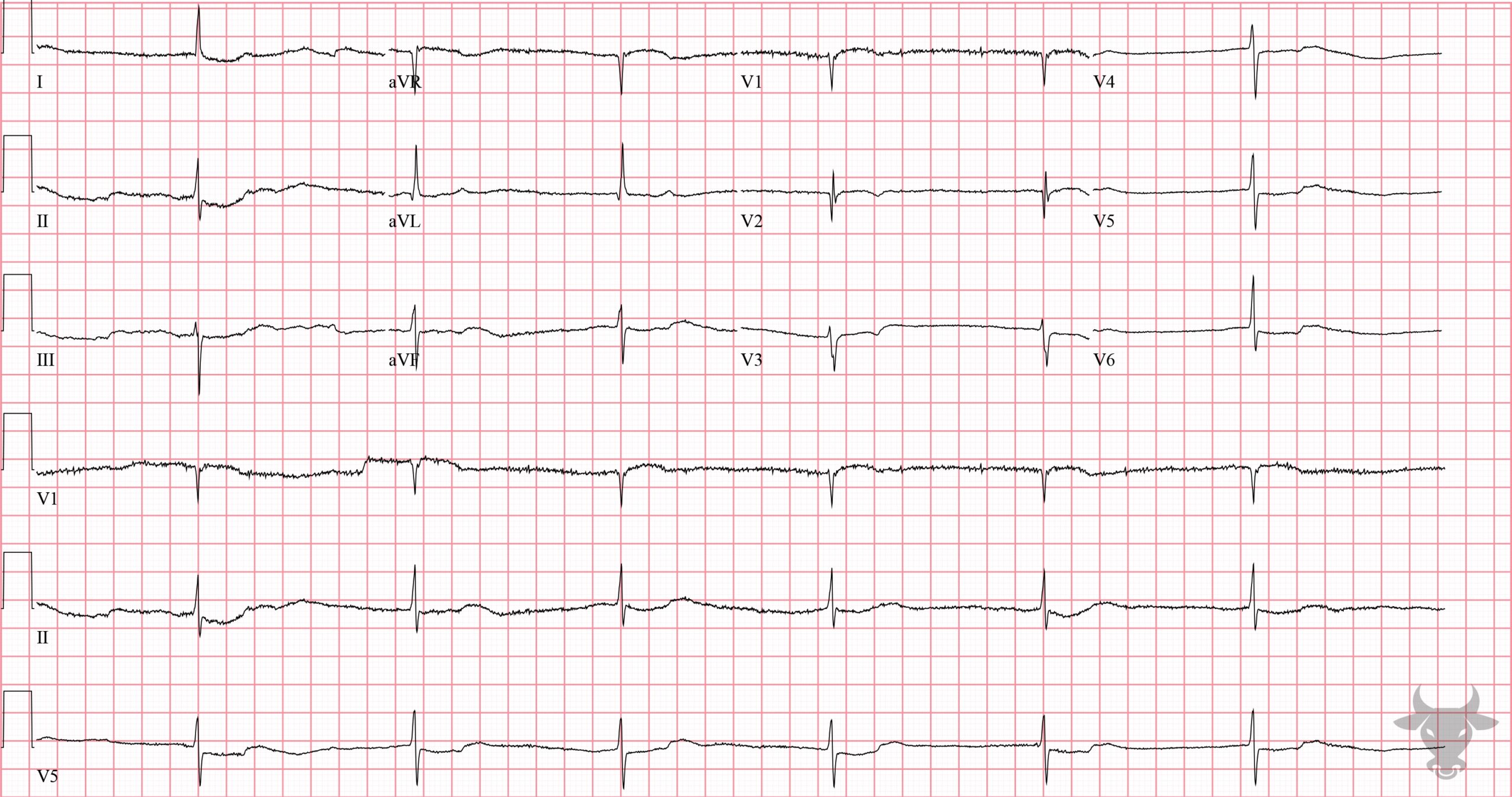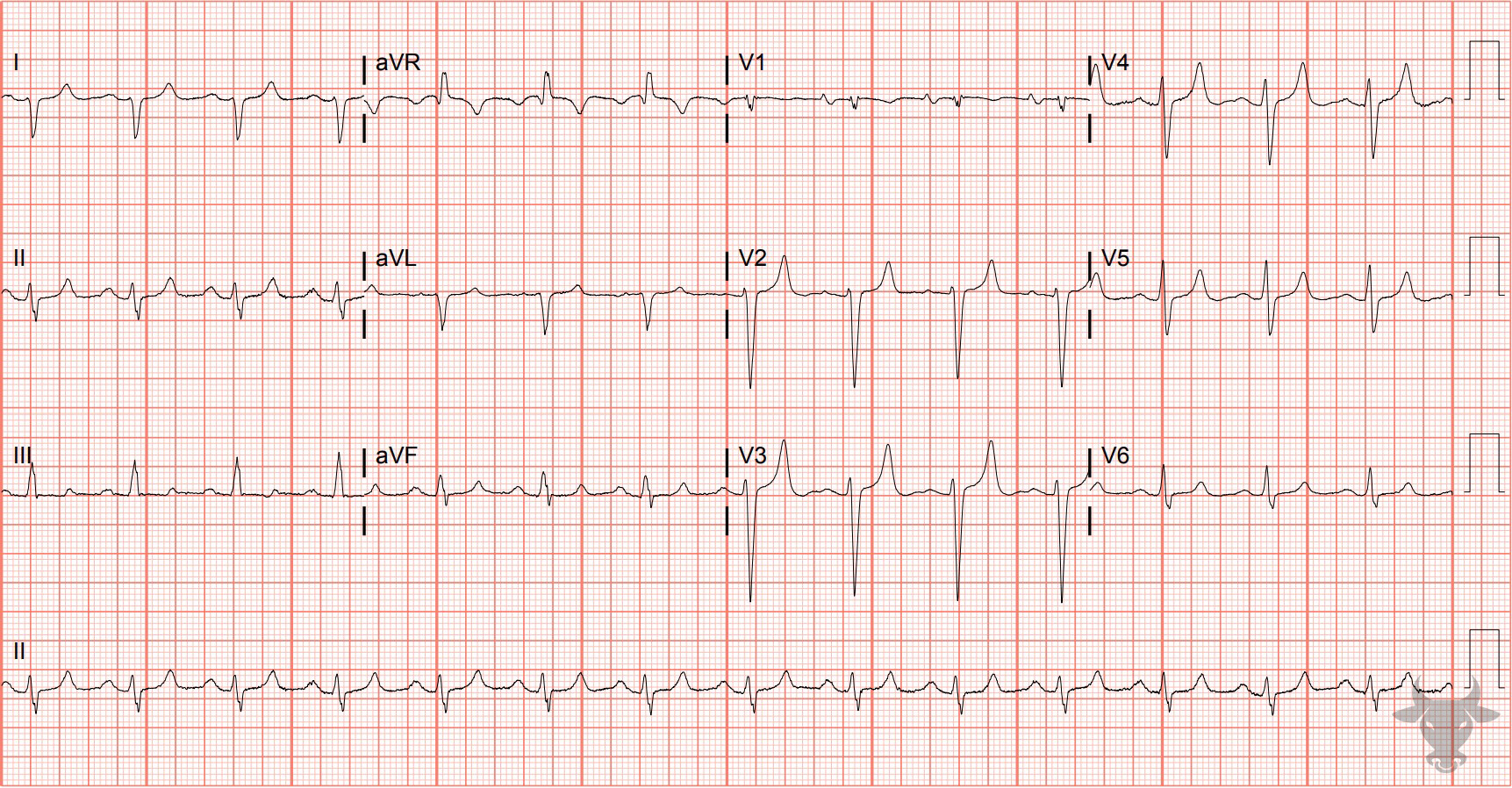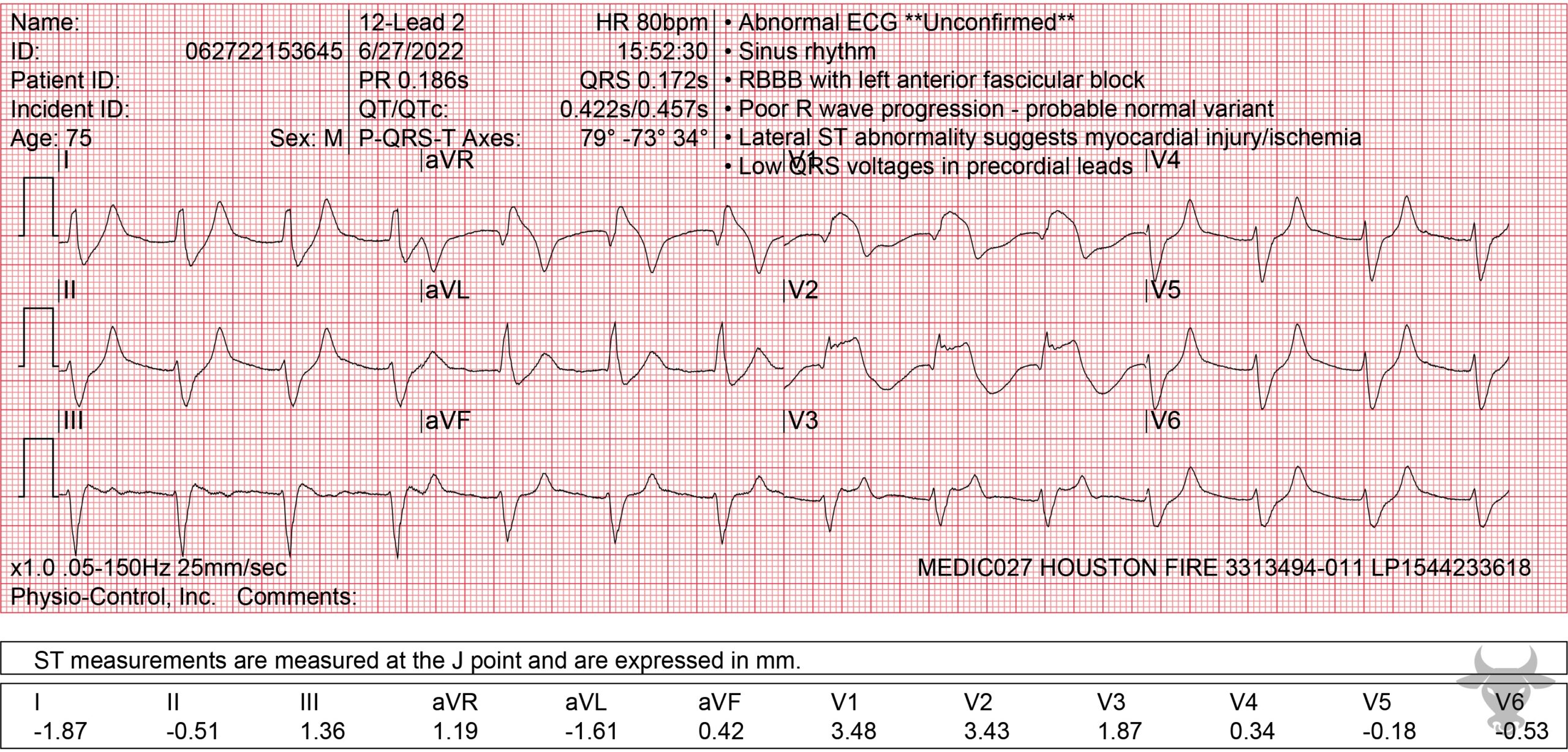Electrocardiographic findings of hyperkalemia tend to follow a progression as toxicity progresses. Often, the earliest finding is narrow-based, peaked T waves, and at the extreme end of the hyperkalemia spectrum, a sine wave morphology is a harbinger of pending ventricular fibrillation. The ECG can be used to predict short-term hyperkalemic adverse events. According to one retrospective study of 188 patients with severe hyperkalemia, the following three findings predicted adverse outcomes within six hours:
- Bradycardia < 50 bpm
- QRS > 110 ms
- Junctional rhythm
Notice that peaked T waves were not found to predict acute adverse outcomes.
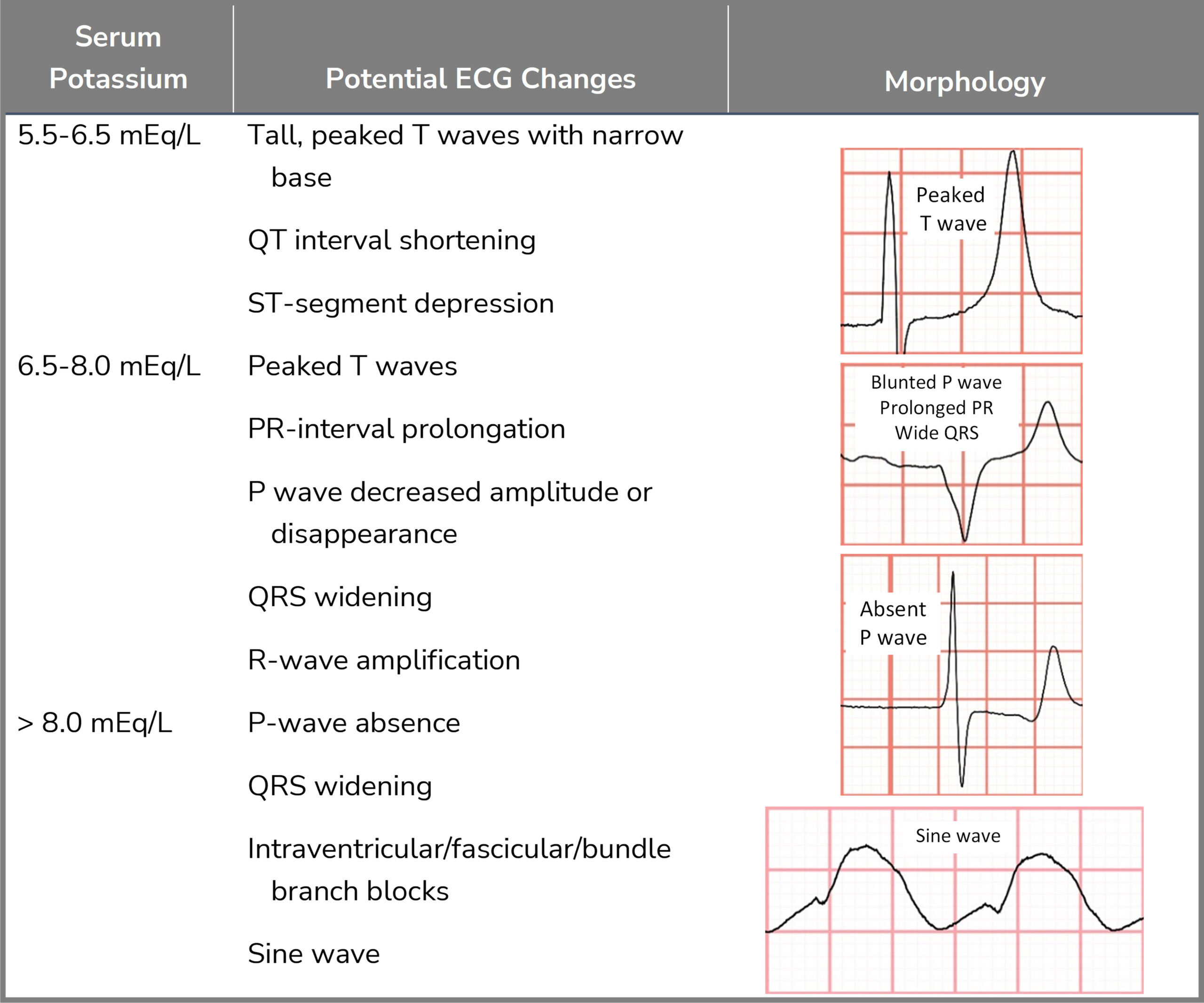
Expected electrocardiographic changes with given serum potassium levels.

